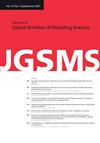Shelby D. Hunt’s legacy, the R-A theory of competition, and its perspective on the geographical indications (GIs) debate
IF 2.7
Q3 BUSINESS
Journal of Global Scholars of Marketing Science
Pub Date : 2021-04-03
DOI:10.1080/21639159.2020.1785919
引用次数: 2
Abstract
ABSTRACT The article highlights Dr. Shelby Hunt’s major contribution to the interminable discussions in the field of competition in general, and most specifically in the role of institutions and public policy promoting productivity and economic growth. The article specifically focuses on Hunt’s legacy, Resource-Advantage Theory of Competition, and its core concepts to guide our understanding in one of the most heated debates in the international trade discussions: Geographical Indications (GI) and their impact on the competitive nature of global trade. Geographical Indications (GI) are collective intellectual property (IP) rights for agri-food products that highlight the unique tie between the quality of the GI product and the territory where it is produced and/or processed. This tie encompasses both physical (i.e. soil, climate, local variety and breed) and human-related factors (i.e. local know-how, specific skills, historical traces). The heated debate regarding the nature and scope of GIs policies and whether these policies foster or hinder competition takes considerable attention in global trade agreements. Founding my arguments on Hunt’s Resource-Advantage theory, a dynamic theory of competition, I argue that GIs policies are pro-competition and provide the agrifood producers with productivity tools and, thereby, have the potential to foster regional economic growth and prosperity.Shelby D.Hunt的遗产,R-A竞争理论及其对地理标志辩论的看法
摘要这篇文章强调了Shelby Hunt博士对竞争领域无休止的讨论的主要贡献,尤其是在机构和公共政策促进生产力和经济增长的作用方面。这篇文章特别关注亨特的遗产——竞争资源优势理论及其核心概念,以指导我们理解国际贸易讨论中最激烈的辩论之一:地理标志及其对全球贸易竞争性质的影响。地理标志(GI)是农业食品的集体知识产权,突出了地理标志产品的质量与生产和/或加工地区之间的独特联系。这种联系包括物理因素(即土壤、气候、当地品种和品种)和人类相关因素(即当地知识、特定技能、历史痕迹)。关于全球信息系统政策的性质和范围以及这些政策是促进还是阻碍竞争的激烈辩论在全球贸易协定中引起了相当大的关注。基于亨特的资源优势理论,这是一种动态的竞争理论,我认为地理信息系统政策有利于竞争,为农业食品生产商提供了生产力工具,从而有潜力促进区域经济增长和繁荣。
本文章由计算机程序翻译,如有差异,请以英文原文为准。
求助全文
约1分钟内获得全文
求助全文

 求助内容:
求助内容: 应助结果提醒方式:
应助结果提醒方式:


